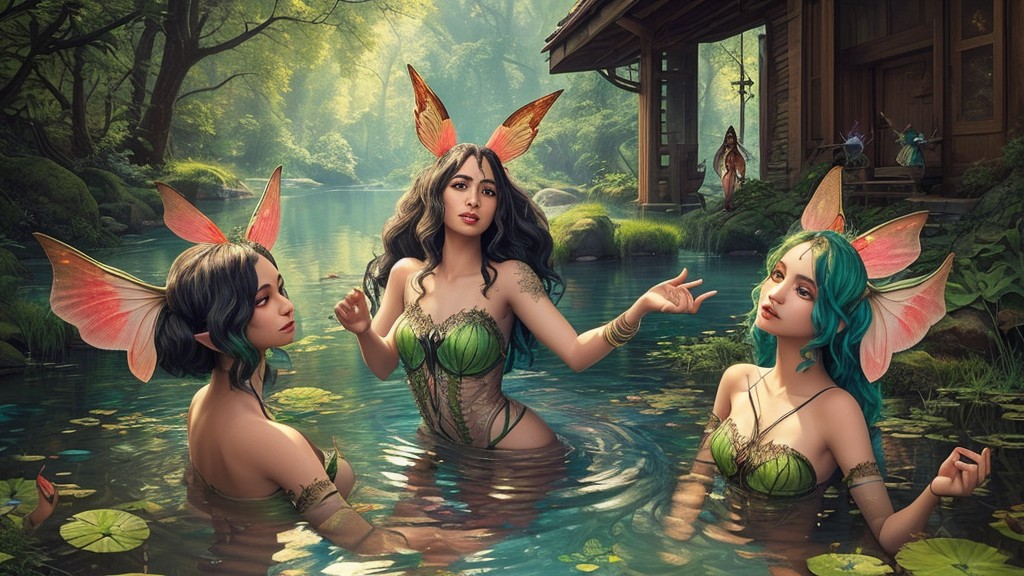
In ancient Greece, nymphs were revered as female spirits of the natural world, embodying the essence of forests, rivers, springs, meadows, mountains, and seas. These minor goddesses were known for crafting the wild beauty of nature, nurturing animals, forming grottos, and nurturing the land. They were depicted as beautiful maidens with attributes matching their habitats, often adorned with flowers like hyacinths and accompanying various gods and goddesses.

Nymphs were not only companions but also nurturers of the gods and goddesses, such as Dionysos, Artemis, Hekate, Poseidon, and others. They played essential roles in Greek mythology, from nurturing infant deities like Zeus and Dionysos to accompanying goddesses in their endeavors. The nymphs were worshipped and honored in sanctuaries across Greece, especially near springs, groves, and grottoes, and were offered sacrifices of goats, lambs, milk, and oil.
Throughout history, the concept of nymphs has evolved, and their classifications have become more fluid. Modern interpretations classify them into various groups, including sea nymphs, tree and forest nymphs, meadow and marsh nymphs, sky and star nymphs, sea nymphs, underworld nymphs, and others. These nymphs were associated with different aspects of nature, from rivers and trees to clouds and stars, embodying the interconnectedness of the natural world. Today, the term “nymph” has a broader usage, often referring to any young and beautiful female figure, echoing the timeless allure of these ancient spirits.

Ancient poets and writers described different types of nymphs, nature spirits associated with various natural elements like springs, rivers, trees, meadows, and mountains. Homer categorized nymphs based on their habitats, while Hesiod distinguished between freshwater nymphs and tree nymphs. Alcman mentioned nymphs associated with Dionysian rituals, and Strabo listed nymphs linked with Dionysos. Pausanias detailed nymph cults in the Peloponnese, while Ovid and Virgil celebrated nymphs in their poems. Late classical writers used various terms for different types of nymphs. Nonnus described many nymph types, focusing on Neiades and Hadryades. The parentage of nymphs varied, with some considered daughters of Zeus, Okeanos, Gaia, Hecaterus, and other gods. Nymphs had varying lifespans, with some immortal and others mortal. They were often depicted with fancifully colored hair and skin. Hymns were dedicated to nymphs, praising their diverse attributes and roles in nature.
Shop Now at Anthousai Apothecary for Your Rituals of Beauty and Wellness
